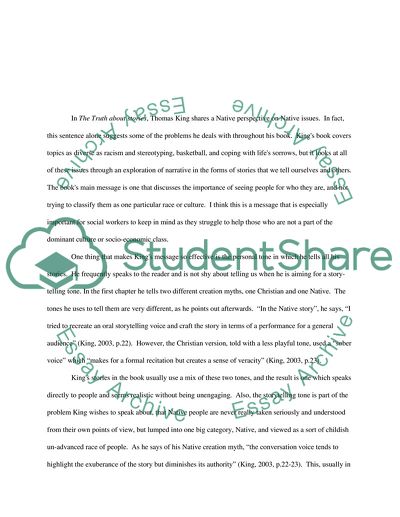Cite this document
(“The Truth about Stories: A Native Narrative Book Report/Review”, n.d.)
Retrieved from https://studentshare.org/literature/1573058-the-truth-about-stories-a-native-narrative
Retrieved from https://studentshare.org/literature/1573058-the-truth-about-stories-a-native-narrative
(The Truth about Stories: A Native Narrative Book Report/Review)
https://studentshare.org/literature/1573058-the-truth-about-stories-a-native-narrative.
https://studentshare.org/literature/1573058-the-truth-about-stories-a-native-narrative.
“The Truth about Stories: A Native Narrative Book Report/Review”, n.d. https://studentshare.org/literature/1573058-the-truth-about-stories-a-native-narrative.


